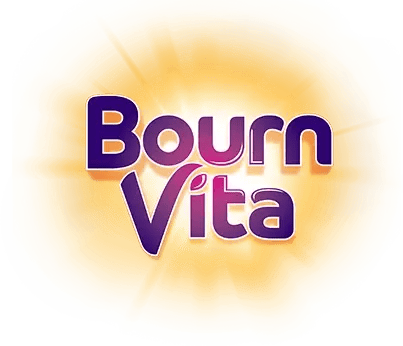- Choose Good Fats Over Bad Fats
- Add More Fruits and Vegetables Daily
- Switch to Whole Grains
- Include Lean Protein Choices
- Limit Sugary and Processed Foods
- Encourage Fiber-Rich Foods
- Teach Smart Eating Habits Early
Introduction

Healthy eating in childhood and adolescence sets the foundation for lifelong wellness, and one of the most overlooked aspects is cholesterol balance. Cholesterol is essential for the body; it helps build cells and hormones, but too much of the wrong kind can affect heart health from a young age. Creating good food habits early on helps kids and teens have energy, focus, and growth while keeping cholesterol in check.
A cholesterol-balancing diet is about choosing the right ones. Fresh fruits, vegetables, whole grains, lean proteins, and good fats from nuts or seeds play a big role in heart health. At the same time, reducing excessive fried foods, packaged snacks and sugary drinks makes the body lighter and healthier. These small changes can be done in simple everyday meals without making diets boring or restrictive.
Kids and teens also benefit when they understand how food choices connect to energy and health. Adding variety, keeping meals colorful and encouraging wholesome snacks instead of processed ones helps them eat balanced nutrition naturally. Combined with an active lifestyle these habits promote steady growth, strong immunity and lifelong protection against cholesterol concerns.
Building cholesterol awareness in growing years means supporting healthy development today and creating habits that will last into adulthood. With thoughtful changes, food becomes enjoyable and protective.
7 Practical Tips for a Cholesterol-Friendly Diet

Cholesterol may sound like an “adult health issue,” but it plays a role in childhood and teen years too. The body needs cholesterol for growth, hormone balance, and building cells, but it’s important to keep levels balanced. Too much unhealthy cholesterol, especially from fried and processed foods, can build habits that affect long-term heart health.
Helping children and teens eat in a way that supports cholesterol balance is about small, thoughtful adjustments, choosing healthier fats, adding more fiber, and keeping meals colorful and varied. These changes can fit easily into daily routines, giving kids both energy for play and protection for the future.
Choose Good Fats Over Bad Fats
Not all fats harm cholesterol. According to a study published in Cureus. 2023, nuts, seeds, avocados, and olive oil provide unsaturated fats that help raise good cholesterol (HDL) and protect the heart. Avoiding trans fats in packaged foods and limiting deep-fried snacks makes a big difference without making meals boring.
Add More Fruits and Vegetables Daily
Fresh produce provides fiber, vitamins, and antioxidants that lower bad cholesterol (LDL). As per a study published in Adv Nutr. 2012 apples, carrots, guavas, and leafy greens are especially helpful. Including fruits as snacks and vegetables in creative dishes like parathas or soups makes them easier for kids to enjoy.
Switch to Whole Grains
Research conducted by Nutrients. 2020 shows that brown rice, whole wheat, oats, and millets are rich in fiber that binds cholesterol and helps remove it from the body. Replacing refined flour with whole grain options supports digestion, provides lasting energy, and reduces the risk of cholesterol build-up.
Include Lean Protein Choices
Fish, skinless chicken, eggs, dals, and beans are excellent sources of lean protein. According to the Dietary Guidelines for Indians, they support muscle development while keeping cholesterol levels balanced. For vegetarians, pulses and soy products are reliable protein options that can be rotated through meals.
Limit Sugary and Processed Foods
Sugary drinks, packaged chips, and fast foods often combine unhealthy fats with added sugars. Research published in BMC Public Health. 2024 shows that these not only increase bad cholesterol but also reduce the intake of more nutritious foods. Replacing them with healthier homemade snacks, like roasted chana or fruit smoothies, helps kids feel satisfied while protecting their health.
Encourage Fiber-Rich Foods
A study published in Nutrients. 2019 shows that foods like lentils, beans, whole fruits, and vegetables provide soluble fiber that helps lower LDL cholesterol. Including salads, sprouts, or a bowl of dal daily makes meals more filling while naturally balancing cholesterol levels.
Teach Smart Eating Habits Early
Children who understand why certain foods matter are more likely to make better choices on their own. Research conducted by Public Health Nutr. 2022 shows that encouraging mindful eating, portion control, and balanced snacking builds habits that protect cholesterol health not just now but throughout adulthood.
Conclusion

A cholesterol-balancing diet for kids and teens is about guidance, not restriction. By focusing on healthy fats, fiber-rich foods, whole grains, lean proteins, and mindful eating, you help children stay active, strong, and protected from future health risks. These habits also give them a better relationship with food, one that combines enjoyment with long-lasting wellness. Small steps taken today create a foundation for healthier choices tomorrow, making cholesterol balance an easy and natural part of daily life.
Her love for storytelling began with reading her grandfather’s speeches, where Tarishi saw the power of words in creating lasting memories. Combining her passions for food and writing, she has turned her life into a fulfilling path of sharing stories that celebrate flavours and how food brings communities together.
The views expressed are that of the expert alone.
The information provided in this content is for informational purposes only and should not be considered a substitute for professional medical advice, diagnosis, or treatment. Always seek the advice of your physician or another qualified healthcare provider before making any significant changes to your diet, exercise, or medication routines. This is a sponsored article.
References
https://pmc.ncbi.nlm.nih.gov/articles/PMC9991721/
https://pmc.ncbi.nlm.nih.gov/articles/PMC6566984/
https://pmc.ncbi.nlm.nih.gov/articles/PMC11323379/
https://www.nin.res.in/dietaryguidelines/pdfjs/locale/DGI24thJune2024fin.pdf
https://pmc.ncbi.nlm.nih.gov/articles/PMC7599874/
















